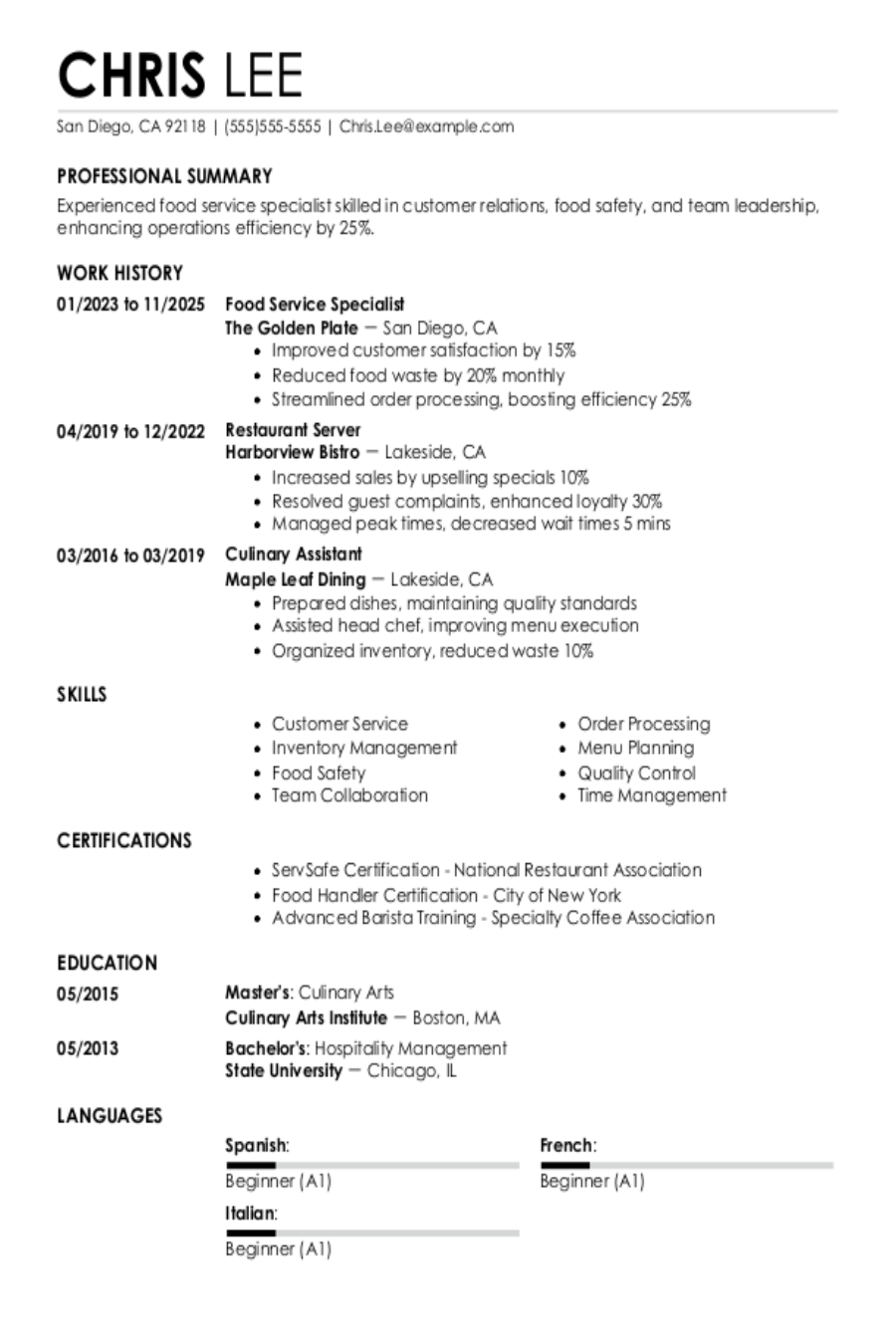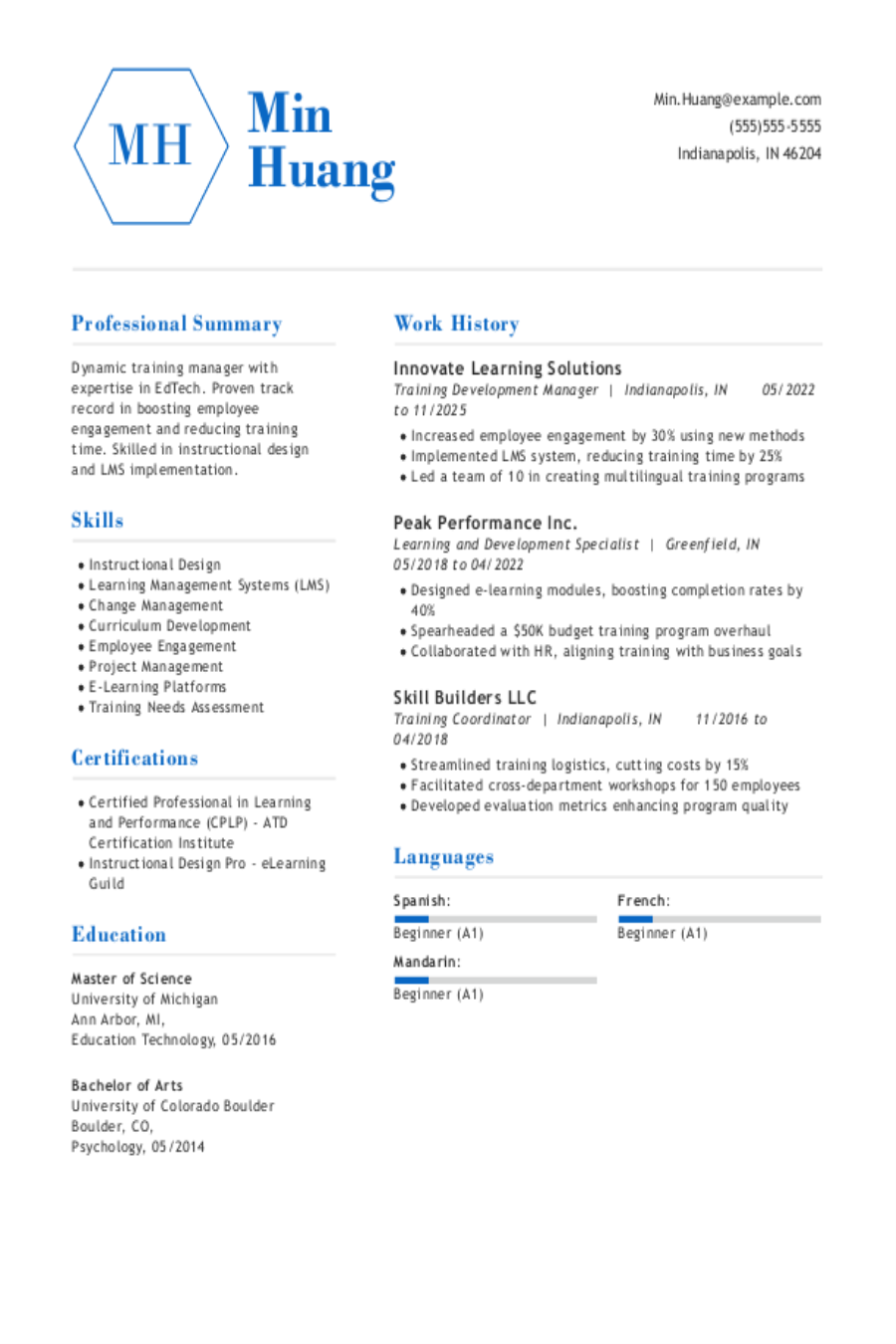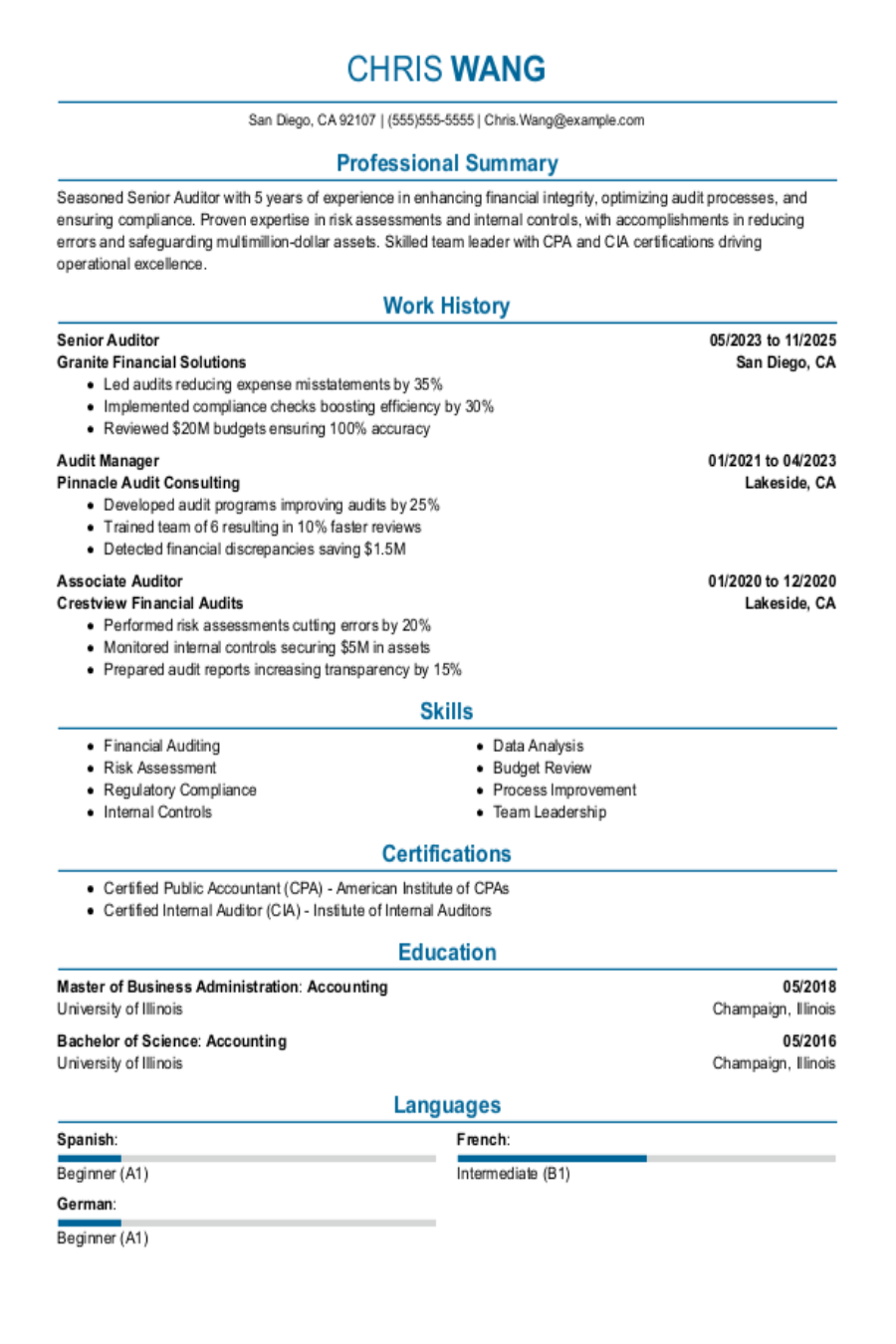Your resume may be the first impression you make on a potential employer, so make it count. School administrators look for organized, creative teachers who can manage their time and their commitments. A detailed teacher resume (plus a compelling cover letter) are the keys to landing an interview.
Here’s a teacher’s guide to crafting a resume, from selecting the right format to highlighting your skills and experience, to writing the perfect summary.
The five components of a teaching resume
Your resume should be a one- or two-page document that covers your experience, skills and education. The length will be determined by the amount of relevant experience and skills you need to include, customized for each position. To get a sense of the best resume format for teachers, take a look at our Teacher Resume Samples. There are three basic resume formats: chronological, functional and hybrid. Your experience and skills will determine which format makes the most sense for you.
Whatever format you pick, you’ll need to balance being both concise and thorough. You don’t want to leave out any critical experience, but you also shouldn’t include several lines of detail about a short volunteer gig. Once you get to the interview, you’ll have time to explain more.
Every well-written resume should contain these five parts: the header, summary statement, skills, work experience and training. Here’s a more in-depth look at each section:
1. Header
The header is where you cover the basics: your name, phone number, email address and a link to your digital teaching portfolio or LinkedIn profile. We no longer recommend including your address, for identity theft protection purposes.
2. Summary Statement
Start your teacher resume with a short paragraph about your teaching philosophy and your abilities in the classroom. As teachers, we often get excited about our craft, but your summary should only be four or five sentences. If you are new to teaching, think big:
- What are you going to do to make your classroom the best learning environment possible?
- What do you want your classroom to feel like?
- What will you do to ensure that your students are learning to the best of their ability?
If you are a veteran teacher, think about what makes you stand out:
- What do you think your kids remember about you and your lessons?
- How is your classroom different?
- What are you looking forward to doing in your next position?
3. Skills
Teachers need a diverse set of skills, so make the most of this section by listing your areas of expertise. Your teacher resume skills might include abilities such as communication, leadership, technology, collaboration and connecting with students. Read the job description carefully to determine which of your skills are most relevant to the position, and customize your resume to include them, using exact phrasing so it’s easy to see you’re a match.
4. Experience
The experience section of your resume delves into each position you’ve held, noting your role and how long you were there. For each position, write brief, active descriptions of your job. Remember to include dates; potential administrators are looking for staying power. Here’s what to include when discussing your previous teaching and education roles:
- Subjects and certifications
What you have taught and what you are certified to teach can vary. Be specific about your experience, as well as your qualifications. - Committees
Your future employer is curious about your in-classroom experience, but they also care about any committees on which you served. Chairing the social committee may not have been too taxing, but increasing teachers’ morale is an important job. - Clubs and coaching
All schools need teachers who can (and will) take on more than the regular classroom duties. If you sponsored a club or coached a sports team, mention that under your experience. - Field trips
Potential administrators are looking for teachers who can handle the paperwork and financial responsibilities that come with taking students on field trips. They also like to know you are willing to get out of the classroom with your students. - Volunteer experiences
Show how you stay connected to the community outside of teaching. Do you coach Little League baseball? Do you tutor on the side? Do you organize an annual beach clean-up? Being involved in the community shows your potential administration that you are a well-rounded person who finds fulfillment outside the four walls of your classrooms.
5. Education and training
In this section, include all your degrees, as well as any continuing education and certifications you have earned. You’ll demonstrate that you are a lifelong learner who stays current on trends in education. List any other certifications here: gifted and talented, Read-to-Succeed and technology certifications. You can also mention any conferences you attended.
Start your resume journey with our expert designed list of templates—browse and get started now.
Taking your teaching resume to the next level
Reading teacher resume examples via our Resume Samples page will give you a sense of how to write a resume that will get you noticed. After you’ve drafted your resume, ask a friend, professor or someone in your school’s career services offices to read it over. Once you get their feedback, proofread your resume to ensure it is free of typos.
Then, write a custom teacher cover letter that brings all the experience you wrote about in your resume to life. Our Cover Letter Templates and AI Resume Builder can help you create a standout application package today.
Was this information about How To Write A Winning Resume For A Teaching Position helpful? Let us know!
Conor is a Certified Professional Resume Writer (CPRW) and member of the Professional Association of Resume Writers & Career Coaches dedicated to helping job seekers excel in their careers.
More resources

What Is a CV? Curriculum Vitae Definition & Who Should Have One
Do you need to know what a CV stands for? We share the definit...

Hard Skills: 70+ Examples to Put on Your Resume
Hard skills are more important than ever in competitive indust...

AI Trends Heading Into 2026: Resume Now’s Year in Review
Across 2025 Resume Now surveyed thousands of workers and empl...

Food Service Resume: Examples, Skills & Template
Looking for work in food service? This guide will help you hig...

Top Training Job Resume Examples & Pro Writing Tips
Build & download your Training Development resume in a few sim...


